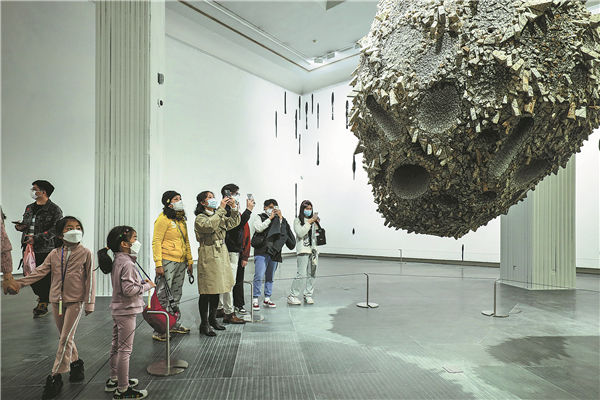

Guangzhou triennial highlights rapid pace of progress and how people adjust to it, Deng Zhangyu reports.
Long lines of visitors queuing outside the Guangdong Museum of Art in Guangzhou, Guangdong province, are not an unusual sight since the Guangzhou Triennial, held at the museum, opened to the public in January. Crowds of young people are flowing into the museum to view the changes of China's contemporary art in the past decades.
The seventh Guangzhou Triennial features 59 works by artists from across the globe, including the United States, the United Kingdom, New Zealand, Portugal, Japan and South Korea. It covers large-scale installations, videos, photos, sculptures, paintings and multimedia works.
Titled Symphony of All the Changes, the triennial puts the word "change" into its four sections curated from various perspectives: Bumps on the Edges, In Praise of Slow Art, Touch Screen and Immanence.
Wang Shaoqiang, director of the Guangdong Museum of Art and curator of the show, says that change and uncertainty have become a reality that faces everyone after an unexpected public health crisis shattered people's expectations of continued development resulting from globalization.
"Change is normal. However, the speed and strength of change reaches a level we never met before. We want to explore how to deal with such change via art. The first thing is to look back into our past," says Wang.
Thus, the Guangzhou triennial puts the city of Guangzhou in the context of China's opening-up and reform in the past four decades, during which the port city in southern China has been at the forefront and blazed the trail to embrace the world.
"Contemporary artists in Guangzhou are very sensitive to new things introduced from the West. Compared to their peers in Beijing and Shanghai, they focus more on their daily life and people living around them," says Wang.